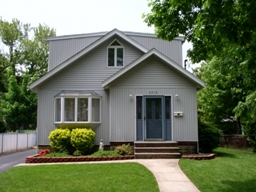What’s Ahead For Mortgage Rates This Week – July 6, 2015

Last week’s housing-related economic events included the Case-Shiller Home Price Index reports for April, the Commerce Department’s Pending Home Sales report and a report on Construction Spending. In other economic news, Non-Farm Payrolls, the ADP Employment report and Consumer Confidence reports were released. Freddie Mac’s mortgage rates summary and the weekly unemployment claims report were released as usual.
Case-Shiller: Home Price Growth Slows in April
The Case-Shiller 20-City Home Price Index reported that year-over-year home prices slowed in April with a reading of 4.20 percent as compared to the March reading of 4.30 percent. David M Blitzer, chairman of the S&P Dow Jones Indices Committee, said that home prices continue to grow, but are not accelerating. According to the 20-City Index, home prices rose 1.10 percent from March to April and were bolstered by the onset of the spring selling season.
The Department of Commerce reported that pending home sales increased to their highest level in more than nine years in May. Pending home sales were 10.40 percent higher than they were in May 2014, which is a further indication of a stronger housing sector. Analysts consider pending home sales as an indicator of future closings and mortgage originations.
Construction Spending Lower, Mortgage Rates Higher
Construction spending dipped in May to 0.80 percent as compared to April’s reading of 2.10 percent; analysts had expected a reading of 0.50 percent in May. The outstanding news is that construction spending for manufacturing building is up by 70 percent year-over-year in May. While not directly connected to housing, this reading suggests that manufacturers are expanding their businesses and will likely expand hiring as well. Concerns over the labor market have kept many would-be home buyers on the sidelines, but improved hiring reports and wage increases are expected to compel more buyers to enter the housing market.
Freddie Mac’s weekly Primary Mortgage Market Survey brought another increase in average mortgage rates; the average rate for a 30 year fixed rate mortgage rose six basis points to 4.08 percent. The average rate for a 15-year fixed rate mortgage rose by three basis points to 3.24 percent and the average rate for a 5/2 adjustable rate mortgage rose by one point to 2.99 percent. Discount points for a 30-year fixed rate mortgage dropped from 0.70 percent to 0.60 percent and were unchanged for 16-year fixed rate mortgages at 0.60 percent and 0.40 percent for a 5/1 adjustable rate mortgage.
Non-Farm Payrolls Lower; ADP Employment
The Bureau of Labor Statistics reported that Non-farm Payrolls dropped to a reading of 223,000 new jobs added as compared to expectations of 225,000 new jobs added and 254,000 new jobs added in May. The ADP employment report, which tracks private-sector hiring, fared better with 237,000 new jobs posted as compared to 203,000 new private sector jobs added in May.
Weekly Jobless Claims Rise to Highest Level in Five Weeks
New claims for unemployment reached their highest reading in five weeks with 281,000 new claims filed against expectations of 275,000 new claims filed and the previous week’s reading of 271,000 jobless claims filed. The four week rolling average of new claims filed showed an increase of 1000 more claims filed for a reading of 274,750 new claims filed. Analysts said that new jobless claims remained below the 300,000 benchmark for the 17th consecutive week.
The Commerce Department reported that the National Unemployment Rate was lower at 5.30 percent as compared to an expected reading of 5.40 percent and May’s reading of 5.50 percent. June’s national unemployment rate was the lowest reading since 2008 and is a good sign that labor markets are steadily if slowly improving.
No economic reports were released Friday due to the Fourth of July holiday.

 Last week’s economic reports included the Case-Shiller Home Price Indexes, FHFA’s House Price Index and Pending Home Sales from the Commerce Department. The details:
Last week’s economic reports included the Case-Shiller Home Price Indexes, FHFA’s House Price Index and Pending Home Sales from the Commerce Department. The details: